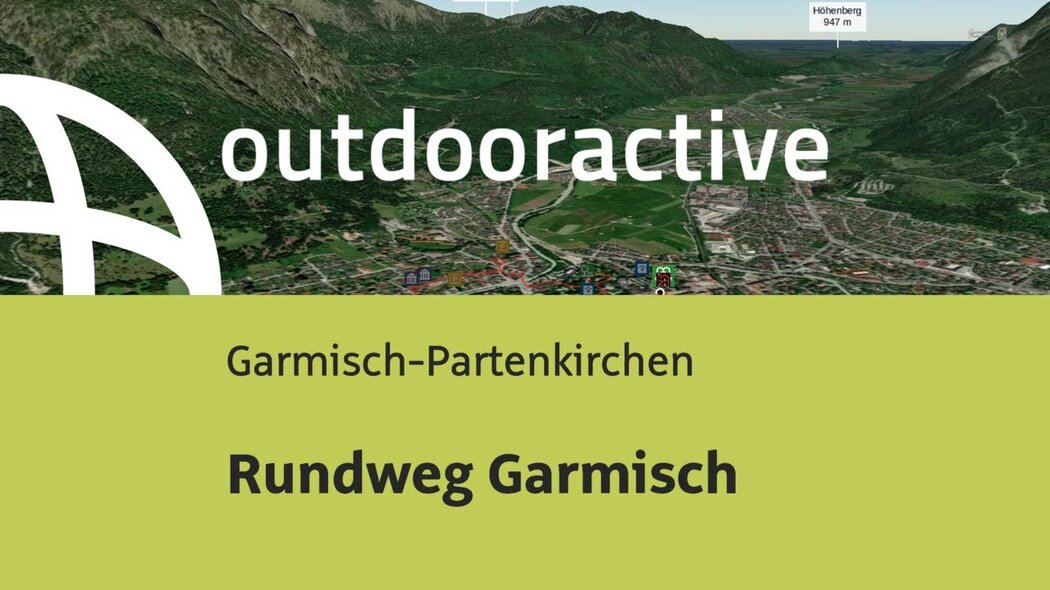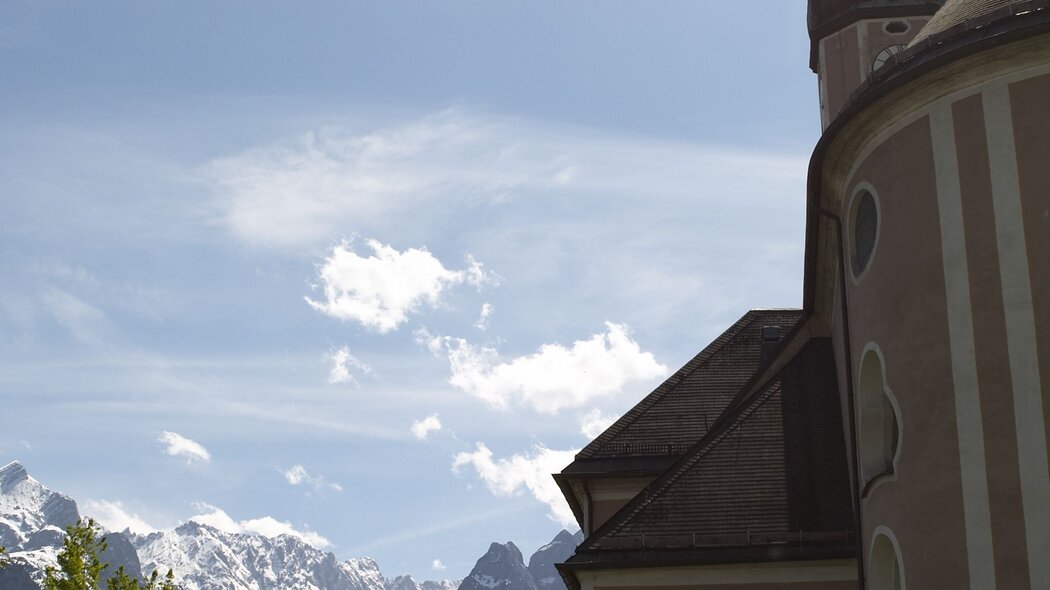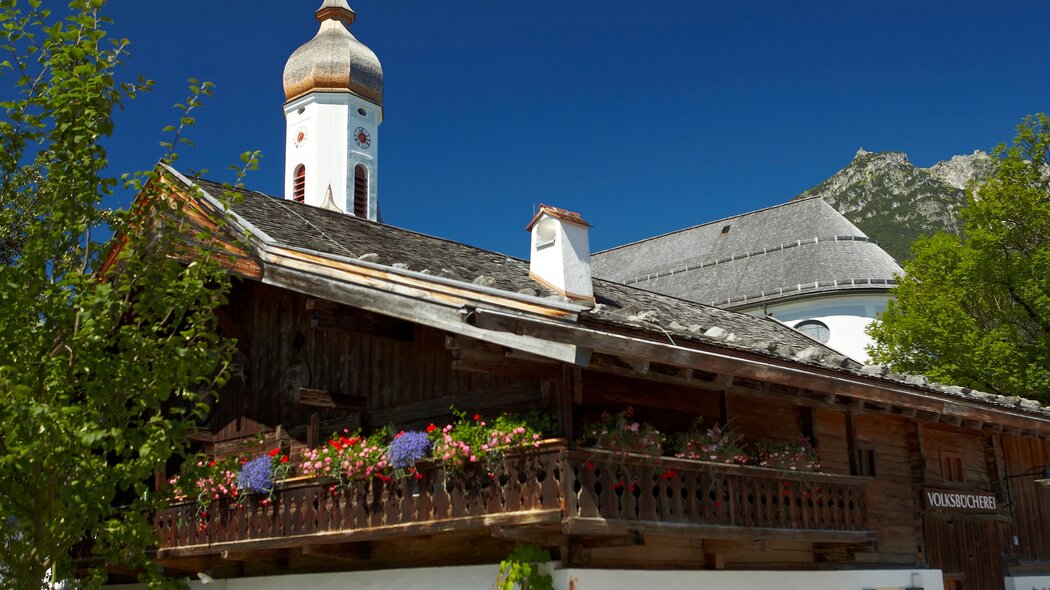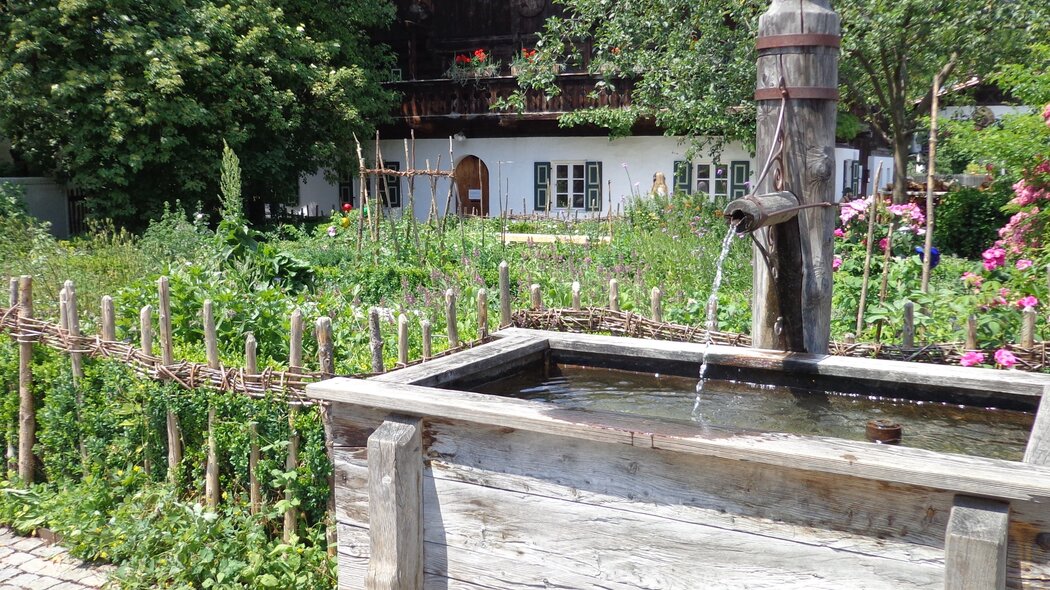Nature Trail
Garmisch – then and now
Interesting stroll through the historic and modern town of Garmisch.
Walk westward to the pedestrian precinct. On some of the houses you can see pretty painings (e.g. an illusory window with a woman watering a geranium). Particularly interesting is the painting on the wall of the Trachtenhaus Grasegger, which was painted by Sebastian Pfeffer from Mittenwald. Right next to it is the gambling house (with a passage to the spa gardens, which are called the Kurpark). Soon after, you pass the so-called Sorge-Haus. This house was painted in 1926 by Heinrich Bickel and shows the patron saints of the family members of that time and the house before its reconstruction.
Here, the pedestrian precinct bends slightly to the right before opening up to the recently remodeled Mohrenplatz. The large building in the middle of the square, which is a restaurant with a Bavarian beer garden, was only finished in 2007. On the left side you will find the historic Polznkaspar-Haus from the year 1595 with a beautiful kitchen garden. Today, it houses the public library. The house opposite has been painted all over with historic transportation scenes: floating in 1730, a stagecoach in 1830 and the Zugspitzbahn cable car in 1930. On the western wall you see a scene from the so-called Sendlinger Mordweihnacht (Sendling Christmas Massacre) in 1705, when, in the crushing of a national uprising, the Bavarian peasant army was butchered after their surrender near the village of Sendling.
On a short detour to the baroque church of St. Martin on the right you can admire painted and figurative religious narratives.
On the Marienplatz square the house of the “Alte Apotheke” with its Empire decoration is the first to catch your eye. Next to it is the Atlas Posthotel, formerly Clausings Posthotel, even earlier Gasthof “Zur Traube”. The owner had the right to import and serve wine from Italy. The carved and painted statuettes on the façade are particularly pretty. Cross the square and walk in the direction of the Josefsplatz square with its fountain, passing the Blaue Haus (blue house). Head on over to the restaurant “Zur Schranne” and another painted illusory window at Griesgartenstraße 20, and then down to the Loisach River. Via the “Schneggensteg” catwalk (named after the house “Zum Schnegger” on the northern Loisach bank) enter Loisachstraße.
Here you can visit the Museum Aschenbrenner, where you can see a collection of dolls and china, an exhibition of nativity, and other, sets, and changing exhibitions.
On you go over to Frühlingstraße, which is one of the oldest parts of Garmisch, with some of its farmsteads already mentioned in documents dating back to the 13th century. They are especially pretty in the summer when the luscious geraniums are in full bloom. The fountain is a nice place for taking a picture with Zugspitze Mountain in the background. Walking then to the east you will reach the restaurant Bräustüberl with mural paintings by Heinrich Bickel. Next to it, on the right, is the Hotel Husar (today a restaurant), with Biedermeier decorations. It was first mentioned in documents dating back to 1587 and has another beautiful illusory window with the title “Husar and Infanterist” (husser and infantryman). From here it is only a few steps to go to the Alte Pfarrkirche (old parish church) of Garmisch (former centre square) with recently uncovered frescos from the 13th century.
Walk back across the Loisach River to the Kurpark (spa gardens), which is a calm and relaxing spot, passing or visiting the Kurhaus with its exhibition on the writer Michael Ende. In the park, you can also see models of old Garmisch farmsteads, a wooden bowling alley, barefoot path, concert shell, and more.
Now you have made it back to Richard-Strauss-Platz.
Characteristics
condition
technology
experience
landscape
best seasons
tour in numbers
route
2.3 km
duration
1:15 h
ascent
1 m
descent
1 m
lowest point
693 m
highest point
698 m









